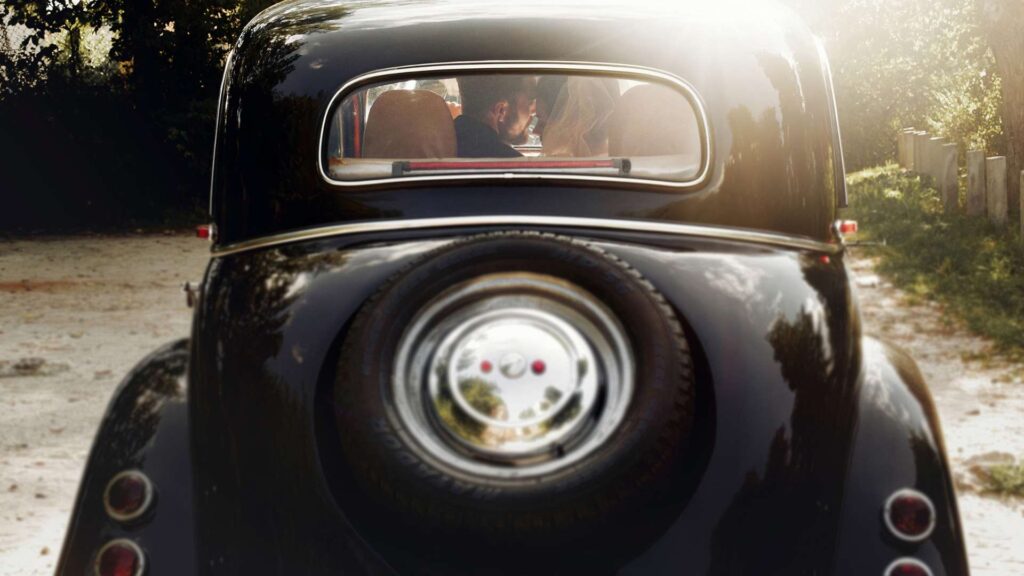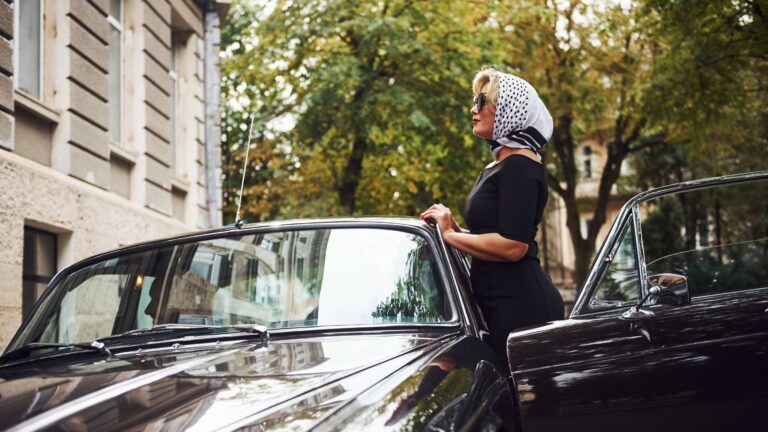Table of Contents
Classic cars are not just vehicles. For many people, they are investments, heirlooms, and labors of love. Unlike a daily driver, a classic car often increases in value over time, making it very different from the average vehicle you take to work or the grocery store. Yet many people mistakenly assume their standard auto insurance policy is enough to protect these unique vehicles.
The truth is, traditional car insurance is not built with collector cars in mind. It assumes depreciation, daily use, and ordinary replacement costs. On the other hand, classic car insurance is specifically designed to account for appreciation, limited usage, and specialized repairs. If you own a vintage Mustang, a restored Corvette, or a carefully preserved European classic, here’s what you need to know about classic car insurance.
What Is Classic Car Insurance?
Classic car insurance is a specialized auto insurance tailored to vehicles considered collectible, vintage, or of historical interest. Unlike standard auto insurance, which protects vehicles used daily, this type of coverage is designed for cars that are not driven regularly, are well-maintained, and often appreciate.
How It Differs From Standard Auto Insurance
Traditional auto insurance is built around the idea that vehicles depreciate over time. If your everyday sedan is damaged or totaled, your insurer pays the actual cash value, which reflects depreciation. That makes sense for daily drivers but not for collector vehicles. Classic car insurance accounts for the fact that many classic cars retain or even increase their value. Policies are structured to ensure owners are compensated fairly if something happens to their prized cars.
Agreed Value vs. Actual Cash Value
One of the most important differences between standard and classic policies is how the car’s value is calculated. A traditional policy’s payout is based on actual cash value, which deducts depreciation. For example, if your 25-year-old vehicle is totaled, you might only get a few hundred dollars because of depreciation, even if the car has significant collector value.
Classic car policies use agreed value coverage. This means you and your insurer agree on the car’s worth upfront, often based on appraisals, market data, and restoration records. If the car is stolen or totaled, you receive the full agreed value, not a depreciated payout. This ensures your investment is properly protected.
Who Needs Classic Car Insurance?
Anyone who owns a vehicle that qualifies as collectible or classic should consider this coverage. This includes:
- Owners of restored vintage models.
- Collectors of rare or limited-edition vehicles.
- Hobbyists who show their cars at exhibitions.
- Investors who own classics as appreciating assets.
Eligibility – Does Your Car Qualify?
Not every older car qualifies for classic car insurance. Insurers have specific eligibility requirements that must be met before they will issue a policy.
Age and Rarity Requirements
Most insurers require that a car be at least 20 to 25 years old to qualify as a classic. However, some specialty insurers extend classic policies to newer collectible vehicles, such as limited-production sports cars, exotic models, or replicas of historic vehicles. Antique classifications often apply to cars over 45 years old, while vintage or collector designations may have slightly different definitions.
Vehicle Condition
The car must typically be in good condition, restored, or well-preserved. A vehicle with a salvage title or in poor condition may not qualify unless it is undergoing restoration, and even then, some insurers limit coverage until the restoration is complete.
Limited Usage Rules
Classic car insurance assumes your car is not your primary mode of transportation. Daily drivers usually do not qualify. Many insurers impose annual mileage restrictions, often in the range of 2,500 to 5,000 miles. These limits reflect the assumption that collector cars are used sparingly for exhibitions, club events, or leisure drives.
Storage Requirements
Insurers want assurance that your car is stored securely. Many require that the vehicle be kept in a private garage or enclosed facility. In some cases, secure carports or specialized storage units are acceptable. The better the storage, the lower the risk, and the more favorable the premiums.
What Does Classic Car Insurance Cover?
Coverage in a classic car policy mirrors the core protections of regular auto insurance, but with enhancements specific to collectors.
Core Coverages
- Liability: Covers bodily injury and property damage if you cause an accident while driving your classic car.
- Comprehensive: Protects against theft, fire, vandalism, or natural disasters.
- Collision: Pays for repairs to your classic after a crash, regardless of fault.
Specialized Coverages
Classic car insurance often includes features designed for collector needs.
- Agreed Value Payouts: You receive the full agreed value if the car is stolen or totaled.
- Spare Parts Coverage: Protects rare or vintage parts you keep on hand.
- Restoration Coverage: Covers vehicles being restored, even when not drivable.
- Auto Show and Exhibition Protection: Extends coverage to events, parades, and exhibitions.
- Specialized Roadside Assistance: Includes flatbed towing to protect delicate or low-clearance vehicles.
How Much Does Classic Car Insurance Cost?
Factors That Affect Premiums
The cost of classic car insurance depends on several variables:
- Vehicle age and rarity: Older or rarer cars typically cost more to insure due to higher replacement values.
- Agreed value: The higher the agreed value, the higher the premium.
- Mileage: The fewer miles you drive, the lower your risk and cost.
- Storage security: Cars kept in locked garages or monitored facilities usually qualify for lower rates.
- Driver record: A clean driving history results in better rates.
Average Cost Comparison
Surprisingly, classic car insurance can often be cheaper than standard auto insurance. Since these cars are driven less frequently and stored securely, premiums may be 25 to 40 percent lower than you would pay to insure a regular vehicle of the same value.
Why Premiums Can Still Be High
If your car has a high agreed value, your premiums will reflect the insurer’s potential payout. Rare cars requiring unique or imported parts also lead to higher claim costs, which can drive premiums upward.
Classic Car Insurance vs. Standard Auto Insurance
Value Protection Differences
The most important distinction is how the car’s value is protected. Standard policies only pay depreciated value, which can devastate a collector car. Classic policies guarantee agreed value payouts.
Usage and Mileage Restrictions
Classic car coverage isn’t for daily drivers. If you plan to commute in your vintage Mustang every day, you will need a standard policy. Classic insurance assumes limited use and protects your car under those conditions.

Claims and Repair Flexibility
Standard policies often restrict where your car can be repaired and may authorize aftermarket or non-OEM parts. Classic policies are more flexible, allowing specialized shops to handle repairs and ensuring authentic parts are used.
Tips for Getting the Best Classic Car Insurance Policy
Shop Around for Specialty Insurers
Not all insurers offer true classic car coverage. Look for companies that specialize in collector vehicles and understand their unique value.
Document Your Vehicle Thoroughly
Keep detailed records of your car, including photographs, appraisals, and receipts for restoration work. This documentation helps establish agreed value and smooths the claims process.
Be Honest About Usage
Do not underreport mileage or misrepresent how you use the car. Misstatements can lead to denied claims.
Review Coverage Regularly
Classic cars can appreciate over time. Review your policy regularly and update the agreed value so your coverage reflects current market conditions.
Mistakes to Avoid With Classic Car Insurance
- Using a standard auto policy: It rarely provides the coverage a collector vehicle requires.
- Underinsuring with a low agreed value: If your agreed value is too low, you will not be fully compensated in the event of a loss.
- Ignoring mileage restrictions: Driving beyond limits can void coverage.
- Skipping proper documentation: Lack of records may lead to disputes during claims.
- Not updating after modifications: Improvements or restorations should be reflected in your policy.
How Beem Can Help You With Insurance Decisions
Beem is an AI-powered smart wallet app that helps you make informed financial choices, including insurance. If you are considering classic car insurance, Beem can:
- Compare quotes from different providers.
- Evaluate whether bundling your classic car coverage with other policies makes sense.
- Highlight gaps in your coverage.
- Keep your financial planning organized so you avoid paying more than necessary.
With Beem, you do not need to guess whether you are getting the best policy for your prized vehicle.
Real-World Scenarios – Learning From Other Owners
Scenario 1: The Collector With Multiple Cars
A collector who owned five vintage cars switched from regular auto policies to a specialty classic insurer. He saved thousands of dollars annually by using agreed-upon values and mileage restrictions while ensuring each car’s full value was covered.
Scenario 2: The Standard Policy Trap
A hobbyist insured his restored Camaro under a regular auto policy. After an accident, he received only $2,500 based on depreciated value, despite the car being worth over $40,000. The lesson: regular insurance is not enough.
Scenario 3: Restoration Coverage Pays Off
One owner had his vehicle covered during restoration. When a fire damaged the workshop, his policy reimbursed the car’s current value and the parts stored, preventing a total financial loss.
Conclusion
A classic car is more than just transportation. It is a piece of history, a reflection of passion, and in many cases, a financial asset that grows in value. Standard insurance cannot protect these unique qualities. Classic car insurance is designed to safeguard both the financial worth and the emotional investment tied to collector vehicles.
Whether you drive your classic once a month or show it at exhibitions, the right coverage makes all the difference. Beem, the personal finance app trusted by over 5 million Americans, provides a convenient platform for comparing car insurance quotes and discovering affordable rates tailored to individual needs. You can take the first step towards securing reliable coverage today with Beem. Download the app here.
FAQs for What You Need to Know About Classic Car Insurance
What qualifies as a “classic” car for insurance purposes?
Generally, a car 20 to 25 years old or older, in good condition, and not used for daily commuting qualifies. Some insurers also include newer exotics and collectibles under classic policies.
How is the agreed value determined?
Agreed value is based on appraisals, photographs, restoration receipts, and market data. You and your insurer agree upfront on the car’s worth, ensuring clarity in the event of a total loss.
Can I drive my classic car daily?
Classic car insurance typically prohibits daily use. These policies cover cars for limited mileage, exhibitions, parades, or weekend drives. Using the car daily could void coverage.
Is classic car insurance cheaper than regular insurance?
In many cases, yes. Because the cars are driven less and stored securely, premiums can be significantly lower than standard policies. However, the agreed value and rarity of the vehicle also affect cost.
How does Beem help me compare policies?
Beem streamlines the process by collecting your details, comparing policies across providers, and showing you where you might save money without sacrificing coverage. It ensures you are not overpaying and helps you evaluate whether a policy truly fits your needs.















































